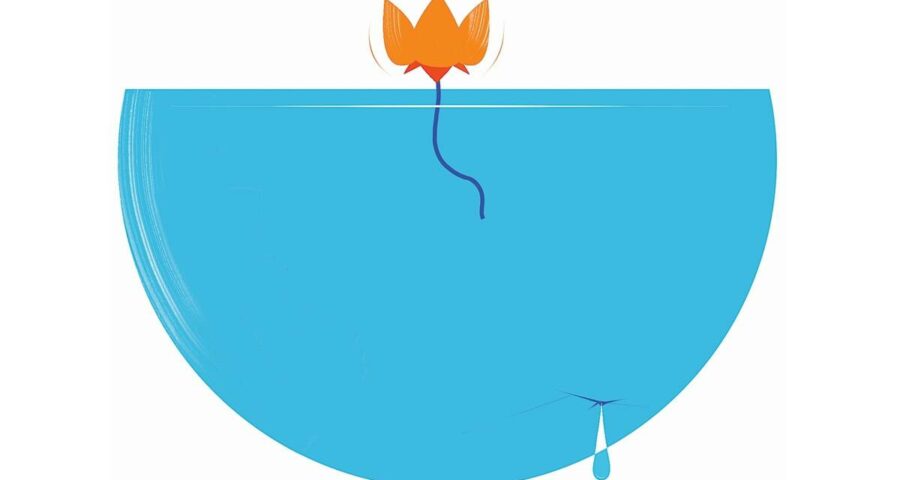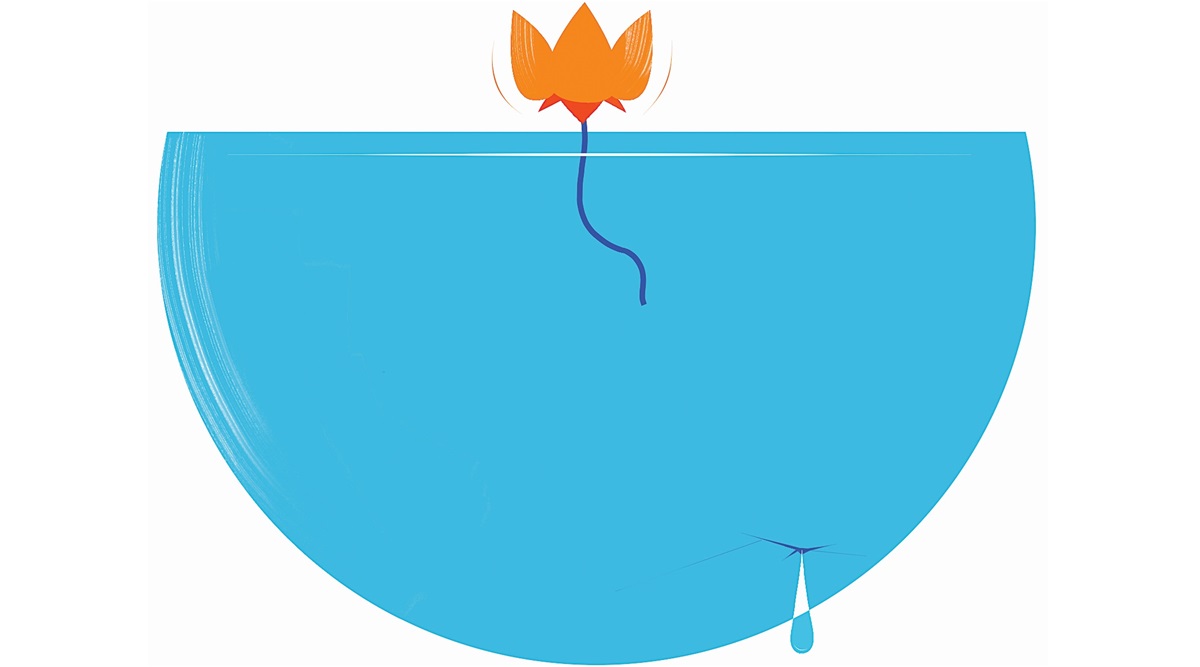Sanjib Baruah writes: Despite the electoral failure of the anti-CAA platform, Gogoi’s victory might prove to be politically consequential in coming months.
Evidently our prime minister does not like the term “election-winning machine” that some analysts like to use to explain the BJP’s remarkable track record of electoral success. Modi told his party workers last July that contrary to what political commentators say, “for the BJP, the party is not just a machine to win elections. It stands for seva (service), for people, for community, for the country, to bring change”. Yet, when one looks closely at the party’s victorious electoral campaign in Assam— especially its clever manoeuvres that successfully took the political wind out of the sails of the opposition to the Citizenship Amendment Act (CAA) — “election-winning machine” would seem to be a perfect description. The BJP made a strategic calculation to steer clear of the CAA, even though the rejection of the CAA was the main campaign issue for the entire opposition.
Modi’s disavowal of the machine analogy, however, points to something significant. While the BJP mobilises enormous resources to win elections, it doesn’t try to do it at the expense of ideology. Commentators have long drawn attention to its carefully constructed strategies of cultivating politically non-dominant caste groups that tend to get overlooked in local configurations of democracy’s politics of numbers. However, all this occurred in the party’s traditional heartland of northern and western India.
Assamese caste society differs in important ways from those in the BJP’s traditional heartland and it presents significant challenges to Hindutva operatives. Yet, they appear to have grasped a working knowledge of some of the specificities and have developed clever strategies of intervention that aim at both short-term electoral gains and the long-term ideological goal of expanding the Hindutva project in Assam and the rest of Northeast India. This was particularly evident in its electoral strategy in Upper Assam — the heartland of both the precolonial Ahom state and the Assamese national project.
Some of the distinctive features of Assamese caste society show the imprint of the influence of Assamese Vaishnavism and of the political and cultural practices of the pre-colonial Ahom state. One’s place in the order of social stratification can be determined not only by birth status, i.e., caste, but also by the status vis-à-vis one’s initiation (xoron in Assamese or saran) into the Vaishnava way of life. Inter-caste mobility and the relatively easy integration of tribal groups into the Assamese socio-cultural formation — though not without status differentiation — characterises Assamese society. Many intermediate groups in the caste tribe continuum are an intrinsic part of the Assamese socio-cultural formation.
A number of these groups are officially recognised as Scheduled Tribes, but others are not; and they aspire to that status. There have been long-standing agitations demanding that status by organisations representing groups such as Ahom, Chutia, Moran and Motok that are important blocs of voters that can swing elections in Upper Assam.
Reporters often use terms like Assam’s “smaller indigenous communities” to describe these groups. They identify themselves as Assamese and many, but not all, are native Assamese speakers — and some exclusively so — but they are simultaneously embedded in distinct ethno-cultural communities.
Interestingly enough, the two top leaders of the BJP in Assam, Himanta Biswa Sarma and Sarbananda Sonowal, are from communities that represent the two different routes to status in Assamese society.
In order to distract from the unpopularity of the CAA among the Assamese, while insisting that the CAA would be a non-issue in this election, the BJP campaigners relentlessly attacked the All India United Democratic Front (AIUDF) leader Badruddin Ajmal in an effort to discredit the alliance. Because of his “attire, skull cap [and] beard”, Ajmal told an interviewer, it was possible to “sell the fear of Ajmal as a representative or an advocate of migrant Muslims”. The strategy paid off handsomely in Upper Assam.
The BJP also actively courted leading activists of the anti-CAA protests that belong to the “smaller indigenous communities”. These communities had voted for the BJP in large numbers in 2016 and 2019. But the CAA alienated many young people from the BJP; and they became leading players in the anti-CAA protests.
In order to bring them back into their fold, the state government adopted symbolic and material measures important to those communities. Despite the fact that their long-standing demand for Scheduled Tribe status remains unfulfilled, many of these anti-CAA activists have now joined the BJP. Some hold positions in the autonomous councils created for those communities and in the BJP’s state unit. They were even among BJP candidates in the elections.
But remarkably, while the BJP has successfully managed the fallout from the CAA in Assam, it has spent no political capital to expand support — not acquiescence — for the CAA among the Assamese.
Despite the electoral failure of the anti-CAA platform, there was one important victory that might prove to be politically consequential in the coming months. Dissident thinker, and a fierce critic of the CAA, Akhil Gogoi, won decisively from Sivasagar — historical Rongpur, the capital of the Ahom state — against a BJP candidate. Gogoi has been in jail since December 2019 for charges stemming from the anti-CAA protests and he contested the elections from prison.
Public sympathy for the incarcerated Gogoi played a role in his victory. Many consider his confinement to be unjust. Raijor Dol — the political party he launched last October — stayed away from the Congress-led alliance because of reservations about the AIDUF. Gogoi believes that Ajmal’s party is as much of a communal party as the BJP; they are “two sides of the same coin”. That Gogoi was elected to represent Sivasagar — a heritage city filled with historical monuments — makes his election rich in political symbolism.
Now that Gogoi has become an elected representative of the people of Sivasagar, his continued imprisonment in a democracy will be unsustainable. If events in coming days unfold in a way that pushes a confrontation between the jailed Gogoi and the institutions of the Indian state, BJP’s electoral triumph could prove to be more ephemeral than it now appears.
This column first appeared in the print edition on May 8, 2021 under the title ‘In Assam, a victory, and a caveat’. The writer is professor of political studies at Bard College, New York
Source: Read Full Article


